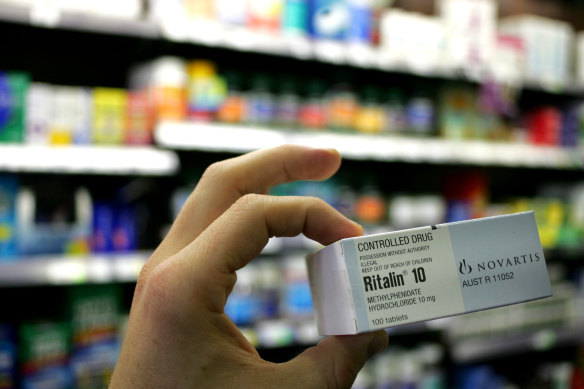This was published 1 year ago
Editorial
Spike in ADHD diagnoses further threatens NDIS budget
The Albanese government is likely to come under further pressure to allow thousands of Australians with a diagnosis of attention deficit hyperactivity disorder to join the National Disability Insurance Scheme.

Ritalin is the most common medicine prescribed to treat ADHD.Credit: Glen McCurtayne
More than 800,000 Australians have ADHD but fewer than 5000 are on the NDIS.
In submissions to a Senate committee hearing into ADHD, psychiatrists and psychologists’ professional organisations have pushed for the treatment to be put on the NDIS, saying assessments and treatments were unreachable for lower-income groups, where there was likely to be a higher prevalence of ADHD.
The Herald’s Natassia Chrysanthos reports that the number of Australians being prescribed medication for ADHD has more than doubled in five years. New figures show more than 400,000 people are now taking drugs for the common neurodevelopmental disorder as awareness rises among doctors and the public. The drugs help people with concentration, short-term memory and controlling emotions.
The Senate committee will report this week. A departmental briefing note to the inquiry reveals the growth in prescription rates over the past decade has averaged 16.7 per cent a year. But between 2020 and 2022, this had soared to an annual growth rate of 26.7 per cent.
Doctors said data showed the backlog of undiagnosed cases was finally being addressed by the health system as the community and doctors learned more about ADHD, which affects 6 to 10 per cent of Australian children and 2 to 6 per cent of adults. About 280,000 children and 530,000 adults in Australia have ADHD, according to a Deloitte Access Economics report.
Until now, many people’s ADHD had never been identified, and prescription rates were starting to reflect that. There was more awareness, education and training for doctors too, while diagnoses in children could often also lead to their parents coming forward, since ADHD tends to run in families.
The growing use of prescribed medication for ADHD has been a controversial issue for years. By 2002, the media was widely questioning whether the use of behaviour-modifying drugs by Australian schoolchildren represented a genuine medical breakthrough for hyperactivity or a deceptively convenient solution to a complex range of problems. Experts conceded stimulants such as Ritalin and Dexedrine showed a calming and focusing effect on children with ADHD but the first national study on the medication of Australian children for emotional or behavioural problems found 25 per cent of these drugs were being taken for behavioural problems other than ADHD.
In the years since, there has been growing acceptance of the drugs. Royal Australian College of General Practitioners member Professor John Kramer said social media had spread so much information about ADHD it had become a “fashionable TikTok diagnosis”. In reality though, health department figures show there were 3.2 million prescriptions issued to 414,000 Australian patients in 2022; four years earlier, 1.4 million prescriptions were given to 186,000 people.
Government spending through the Pharmaceutical Benefits Scheme also almost tripled in five years. Last year, $152 million was spent subsidising the five ADHD medicines listed on the scheme, up from $59 million in 2018. Methylphenidate, often sold under the brand name Ritalin, was the most common medicine. It was dispensed more than 1.2 million times last year, mostly to males.
The Senate committee may recommend that people who require treatment for ADHD join the NDIS. The Albanese government wants to tie the $35 billion scheme to an 8 per cent annual growth target but with school and health system supports drying up, the explosion in ADHD diagnoses has created a group of sufferers who cannot afford private sector treatment. Tough decisions loom.
Bevan Shields sends an exclusive newsletter to subscribers each week. Sign up to receive his Note from the Editor.